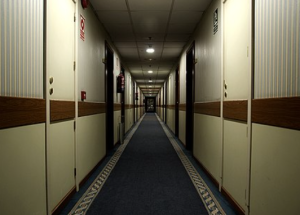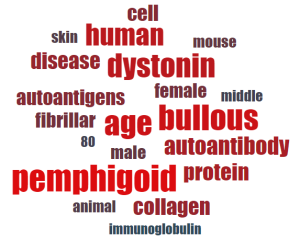
Science is a public good, and we need to provide the mechanisms for it to get out there.
Jon was able to speak to the Alvernia Board of Trustees’ Innovation Subcommittee about PubTrawlr. He outlined some of the milestones that we have accomplished, and some of the places that we’d like to go.
Watch the presentation here, or read the transcription below!
PubTrawlr is a company that I’ve working on with my brother Matt, and a bunch of really, really, really smart people. This is our advisory board here. My background is a community psychologist by training. And that’s the angle I come at this from. So I’m really interested in how do we get good ideas out into the places and where we live and work? How do we use the products of research and all the good ideas that are floating around in public health and social services and get them to be better used? The angle I come at this reflects the background that like Dr. Matteo has and how to integrate a lot of these different, community-based interventions.
There’s this robust statistic that it takes about 17 years for something to get out of journals and into the hands of practitioners. That’s a really, really long lead time. And when we think about the reasons why that doesn’t happen, there’s a whole field dedicated to that, but one of them happens way back at the beginning.
One of the barriers is there’s just too much out there. I consider myself a recovering academic and my reading list is currently, maybe like 90 articles long. I’m sure some of the academics in this room have similarly long lists that they’re trying to get through. And we’re just theory people. What about like our, our professionals? The people actually like working out there providing services? How long does your doctor spend every month staying up to date with the recent treatments that are coming, coming down the pipeline?
So there are a lot of consequences for this implementation gap. Students may not know the most current knowledge or industries may not be aware of current developments and, most importantly, our patients are not getting the best treatments. There’s this lag time there.
So one possible solution is way back at the beginning. And this is particularly amenable to a technological solution. And that’s just what PubTrawlr does; we’re basically giving people time back. We’re a web-based tool that pools from the academic literature and synthesizes that using a lot of natural language processing techniques. People that aren’t familiar with natural language processing, it’s an artificial intelligence subfield that basically takes text-based data and crunches it very quickly. So it’s the intersection of qualitative and quantitative research. PubTrawlr collects, organizes, summarizes, and recommends based on what you’re interested in.
PubTrawlr s a live website. You go there right now and play around with it. We have a free level that you can just go experiment with to your heart’s content. And we used a lot of cutting-edge stuff in there. That’s not an exaggeration; we’re really using really advanced models to help us organize what’s coming down.
[Here’s what the video would have been!]
Our business model right now is we have three different products versus our core search. So we have our free level, and then we have our subscription level that pulls into the thousands and thousands of articles and does some really robust clustering of them. Our 101 Days of science is basically and eNewsletter. So if you’re interested in health equity or substance abuse treatment, or colon cancer research or autism treatment, every couple of months, every 101 days, we pull everything we can find on that from both the academic literature and the news, and organize that to say, “here’s what matters from that”
We’re also, and this is the Alvernia connection that Rodney was alluding to, we’re also able to integrate with databases so we can sit on top of existing subscriptions and leverage their licenses to pull data and organize and cluster that together. And John Weidenhammer’s, the group based out of Allentown, they’re leading the technical development of that. So shout out to them.
We see a bunch of different potential audiences for this, both from an organizational level and an individual level. I already mentioned the academic libraries. There are also hospital systems, governmental health departments, nonprofits, patient advocacy groups, like the Alzheimer’s Association, for example, that could potentially benefit from being able to provide their stakeholders with the best possible and most recent information.
We certainly know that there are many individuals out there, either professionals or loved ones, people who have people in their family with conditions who want to be better advocates who want to stay on top of the research. And that’s how we’re clustering our marketing.
We’re not the first people to try to deal with scientific literature. This is a graph of quality versus price. So there’s a bunch of free stuff out there. You can go to Google Scholar, for example, you can go to Semantic Scholar. And they’ll give you stuff back.
You can also have a big ole’ Lexus Nexus subscription, like a lot of companies do, that really puts researchers on a topic and pulls it together. We are situated is in this blank spot between cost and synthesis. So you can search for stuff out there, but you’re not gonna get it organized and analyzed the ways that we do.
And it’s actually pretty important for me, to shoot myself on the foot right now, to keep costs down because I want this stuff to be accessible. Science is a public good, and we need to get that out there and provide the mechanisms for it to get out there. And this is one thing I hope that we’re moving towards.
This is just comparing against some of our like principle competitors. Really our main advantage is in terms of the synthesis and the cost because I want to keep it down.
We hit a lot of milestones last year. We officially spun off of Dawn Chorus, which allowed us to separate the financing early last year. We’ve made a lot of performance improvements, had some peer-reviewed articles published out there. I’m happy to share those if you, geek out on that stuff. Moved here, nice to get out of the basement, and so on. But if you’re really anxious, like I am, you’re more interested in what happens next. So we have a couple of product launches that we’ve done this year.
I mentioned 101 days of science. We’ve launched a couple of issues in the past couple of weeks. We’re doing the friends and family round now for reasons that I’ll get into and we’re starting to seek out SBIR funding with some heavy hitters at Lehigh to really look at some of the technical aspects of what we’re trying to do.
Through Ben Franklin, we got hooked up with a group that has done a huge amount of financial research for us. So thank you to Angelo’s team. This is basically what our numbers are in terms of these different market numbers we’ve looked at. There’s a bunch of colleges out there, a bunch of health practitioners, a bunch of local and state health offices, a bunch of nonprofits, and so on.
There are a lot out of potential customers for this. I also want to qualify that these are US estimates. There’s no reason this stuff can’t go abroad, except for the normal working in Europe and so on. And indeed we’ve been talking to people in Australia and Canada that I have preexisting relationships with around ways that we can support their work.
So we have, we have a couple of current customers I already mentioned out be we’re working with a very large nonprofit working in vaccine hesitancy and health equity (that’s RISE), working with Cincinnati Children’s around community resilience, and working with the international pephigus and phemigoid foundation around helping them be better messengers to their stakeholders. So they’ve got patients, they’ve got families, they’ve got medical practitioners who want to know what’s coming down the pike.
In terms of where I’d like this to go I often say I want to be number three.
You’ve got a question, you’re going to go to Google and then maybe you go to Wikipedia, but then, I want people to come to us. So when you’re ready to actually get that bridge between what’s commonly out there and the hard science, let’s shrink that and make it more accessible.
There are like nine potential categories of exit strategies, like passing things on to your children. Our major competitors who have substantial financing are people who basically control with databases right now, Elservier and EBSCO, and really what they don’t do is synthesis. What they don’t do is put everything together in a nice little package and say, “this is what it means.”
That’s some potential there. We basically need three categories of things to grow: marketing capacity, technical capacity, and what I call internal capacity.
So marketing capacity you know, how do we get stuff out there? We’ve got a couple of different prices for marketing plans and you just need a chunk of money to do it. Otherwise, you’re not gonna get the returns on what you’re trying to do.
I’m very comfortable in this middle area, the technological capacity, and we’re doing so many incremental improvements, updating the code base all the time, reaching out to people, be they, John Weidenhammer’s team, be the people of, at Lehigh, be they other people locally to improve sort of the underlying algorithmic and computing things.
But then the internal capacity—- Look, I know where my strengths are. It’s in the middle there. What I don’t know well is what does it take to really sort of grow and nurture and get this, get this stuff out there. So we’ve begun to try and find someone who can take those reigns. Someone who really aligns with the types of things that we do, who has those real good leadership qualities, and can help coordinate. What does it take to grow? What does it take to really make this stuff happen



